Written by:
This blog was first published on our project website for Cross-pollination: Growing cross-sector design collaboration in placemaking, a collaborative action research project led by Open University and the Glass-House Community Led Design, working with local partners in England, Scotland and Wales. It is funded by the Arts and Humanities Research Council.
On 17 June we spent our day in Gurnos, facilitating a creative conversation and forward planning for an Open Day event aiming to catalyse communication and collaboration between local organisations and members of the community.


The day was organised in collaboration with colleagues from the Open University’s partnership team in Wales as part of two projects: the Creu Cyffro Community Renewal Funded project, led by Wellbeing Merthyr, and the AHRC funded Cross-pollination project collaboratively led by the Open University and The Glass-House Community Led Design.
As you can read in our previous post this Design Day came about from an explorative process with different organisations and individuals in Merthyr who discussed challenges, assets and opportunities of the local community, and generated ideas for action that would help improve the place and local people’s relationship to this place and the organisations that support them. The group had decided to focus on Gurnos, one of the most deprived housing areas in Merthyr according to The Welsh Index of Multiple Deprivation.
We started the day with a walk around Gurnos, to familiarise ourselves with the area. We were blessed with a bright blue sky and a light breeze so we took our time to get a feel for the place, the older and newer parts of the estate, and to explore the facilities and possible locations for the open day event.

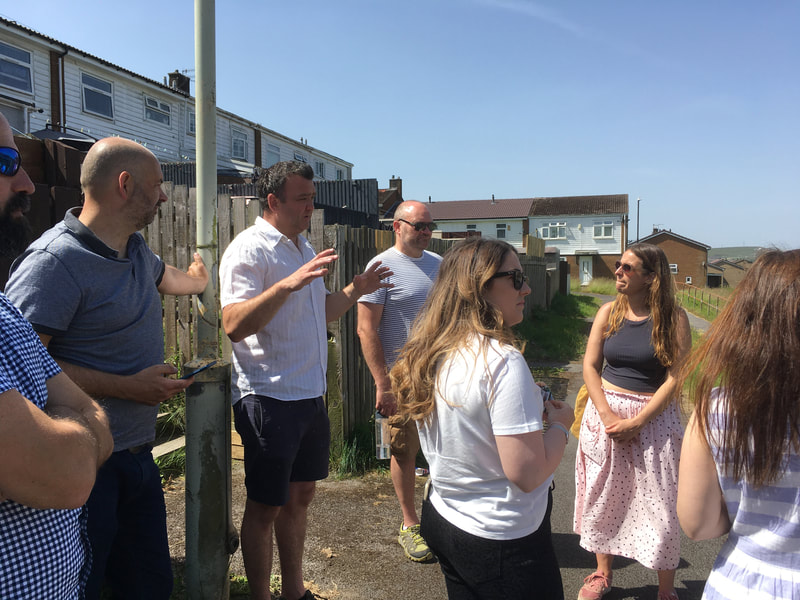
I was personally struck by the greenery and the large amount of open spaces available, but was also surprised by what seemed to be a lack of engagement with these spaces. Some participants in our group talked about litter or antisocial behaviour, but what I felt was a key challenge here was the lack of a sense of ‘public space’, not in the legal sense, but in a more visceral and affective sense. While uncertainties as to who is responsible for the upkeep of different patches of grass play a role, my observation was more to do with the feeling of ownership and the function of public space as ‘commons’, as a resource which people can use to gather, develop their cultural and social relationships and act as a collective.
There are real issues affecting people’s perception and behaviour in public spaces, such as unemployment, poor health, lack of adequate housing, all contributing to a general lack of aspiration. Yet, all the people who were around me that day showed they deeply care and strive to make things better for the area and its local residents. Homes are gradually being made more energy efficient and environmentally friendly, plans for a new school are in motion, trees are planted, allotment spaces are designated etc. The question is how can local people become more engaged in the decisions that affect them and become empowered to develop ownership of their public space?
Once we returned to our meeting room, in the 3G’s Creative Clinic, we were joined by a couple more individuals who represented initiatives and organisations around Gurnos to help develop more tangible ideas about the Open Day. First, we viewed the Prototyping Utopias film. The film presents the activities and outcomes of a past project which was developed in collaboration with Bow Church, Bow Arts, Bromley by Bow Centre and Poplar HARCA and shared at Utopia Fair at Somerset House in central London, in the summer of 2016. The film provided some inspiration to show how with a few resources, like arts and crafts materials and a lending ear, and unexpected places like a church, can become catalysts for serendipitous encounters, potentially leading to the generation of community visions and actions.
We then broke out in two groups to work things out in more detail. Each group had to come up with a vision statement for the open day and use this in order to explore the shape (structure) of the event and explore a series of questions to help identify the activities, audiences and mechanisms of engagement to be used.
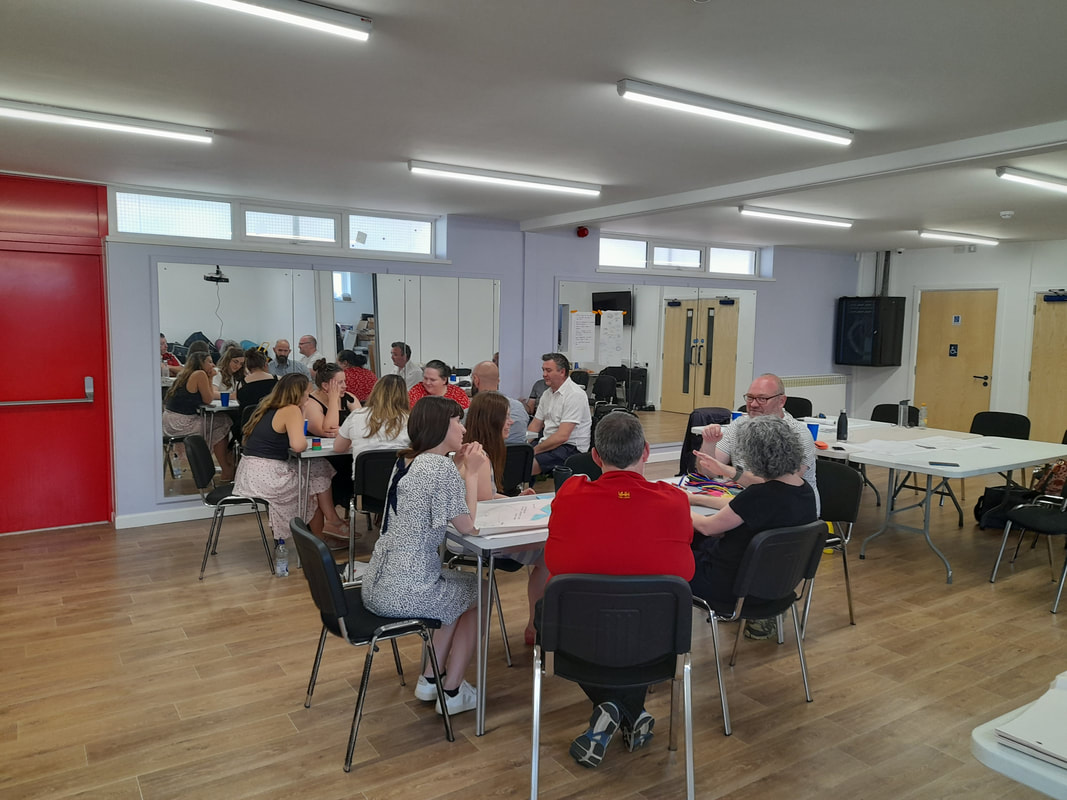
The first group framed the vision of the event as follows: “a space to encourage connection between our diverse community and to champion pride over ‘Your Gurnos’”. The group were keen to ensure that the open day provided a space to champion Gurnos and that an essential part would be showcasing and inviting dialogue around what is good about Gurnos. They talked about how the open day could be used as an opportunity to activate various open spaces and to motivate local people to take ownership and protect them as assets for the community. The creative arts were thought by all to be a useful vehicle for activating the community. The conversation also highlighted the positive effects the creative arts can have in boosting wellbeing, and it was thought that wellbeing should also be a clear focus within the planning of the open day event. Logistically it was felt that the open day should operate at multiple locations; a central location with a series of fringe events which would rotate around the area to allow for an inclusive and accessible way for all communities, individuals and groups to participate.


The second group framed the event as “an opportunity to listen to community voices, capture their diverse, authentic, experiences, and motivate them to engage in co-creation”. The group considered the idea of a series of activities happening in different places over a period of time that produce the content and main attraction for a final event. The group talked about different ways to capture the voices of local people, coming up with the idea for a game that can act as the main attraction, for example using a moveable ‘tree’ that people can ‘speak to’, and record their dreams and aspirations. This metaphor spoke to the fact that streets in Gurnos are named after trees and flowers. They also discussed ideas for involving different groups, schools, local clubs, etc to host and help produce the ‘tree’ itself (e.g. using recycled materials) as well as the content. The group also explored ideas for various activities surrounding the main attraction, offering opportunities for families to get involved. It was considered important that the final event incorporates some form of call to action, inviting local residents to provide input and engage ‘in the next stage’ of moving future initiatives forward.
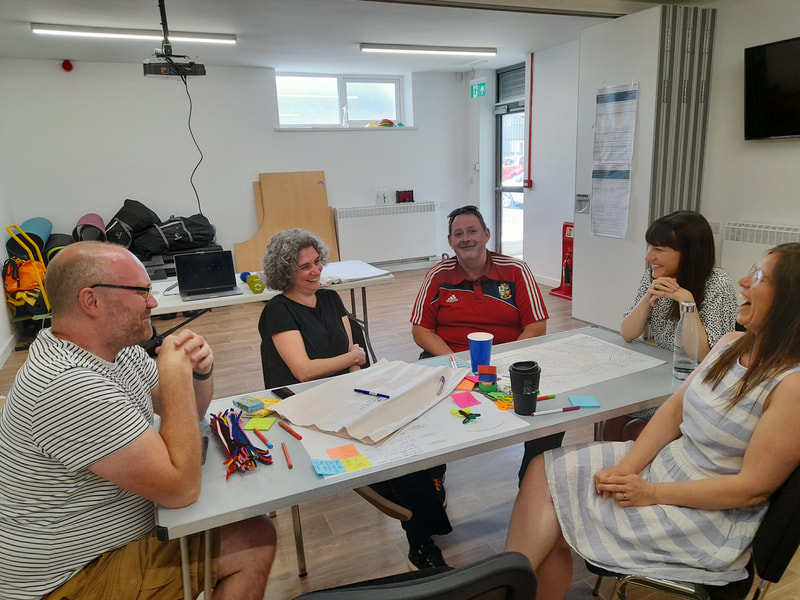

Reflecting on the ideas of both groups, there seemed to be agreement about the overall shape and principles of the event as something that is both the end of a period of engagement with local people and at the same time the beginning of a new cycle of more meaningful engagement: the seed for more collaboration growing locally.
We ended the day with a quick round of ‘cross-pollination’ using a set of prompts (cross-pollination cards) to record assets and see how they can be connected to further assure the legacy of this initial workshop and of the open day event.
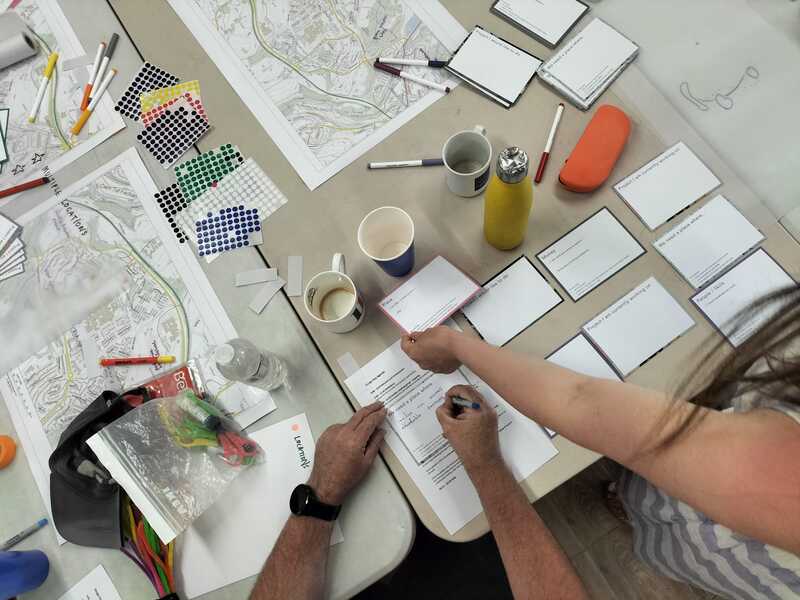


Finally, participants shared their impressions about their day. Some felt excited about the possibilities, hopeful and positive, others felt slightly worried about the timescales, but all highlighted the importance of learning from one another and really listening to what the community has to say. They also banded around the importance of boosting local pride and of creating a new narrative for the community, by overcoming the negatives and celebrating the positives.
The details of the open event are to be decided over the coming months, and perhaps of the many ideas put on the table only a few will be able to be realised between now and the autumn. But it felt like the group made a really good start indeed.

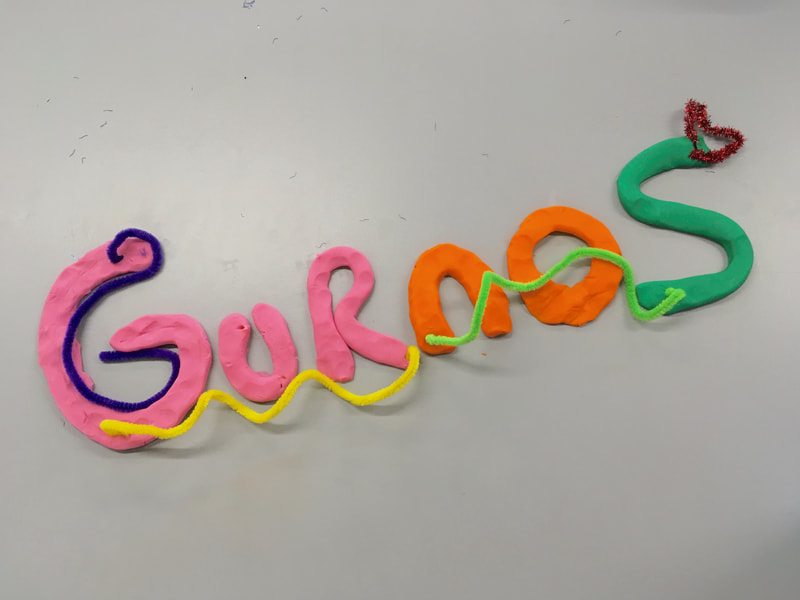
Blog post by Katerina Alexiou, Open University, with Jake Stephenson-Bartley, The Glass-House Community Led Design. Thanks to Nicole Lotz for some of the images.
A closing thought from The Glass-House
As a representative of The Glass-House at this collaborative design day to plan an Open Day event, it was great to see such passion and excitement for championing positive change in Gurnos. Throughout the day, the groups continued to demonstrate inspiring aspirations for the Open Day, building on and supporting existing and new initiatives. They were looking at the task at hand in planning the Open Day, but focused also on the long-term benefit of those who live in and around the area of Gurnos. It was clear that among those attending, there were people, networks, and initiatives that could help catalyse effective change. The day served as a strong example of the importance of local groups coming together to shape future ideas for engaging members of their community and those beyond.
The Cross-pollination: Growing cross-sector design collaboration in placemaking project aims to scale up collaboration by exploring and developing spaces and mechanisms that can enable and empower placemaking actors (e.g. local authorities, civic sector organisations, community groups, academic institutions, cultural institutions and businesses) to connect on shared values and objectives, unearth and mobilise their collective assets, and then collaborate through design and placemaking initiatives in local areas.
